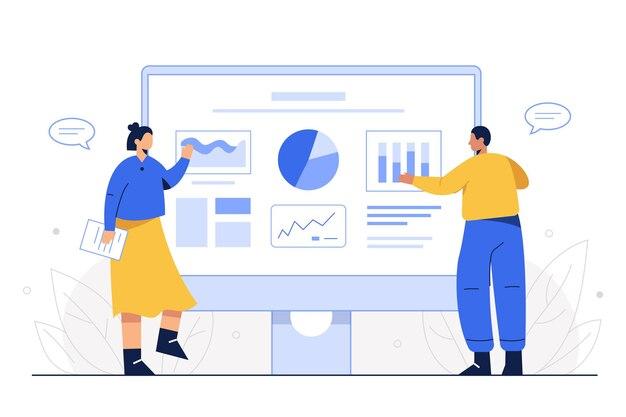It’s every advertiser’s dream for having an efficient, productive, and manageable call network. With certain features like call tracking enabled in your company, you can do just that and so much more! Here’s how to set it up for your business.
We’ve all at least once experienced a frustrating time with texts, emails, and chats. There has been a time when we had no idea how our recipient felt and, well, times when we had no idea what they even meant. Reading the plain text on our device’s screen gets no gears running in our heads, except probable confusion. No matter how effectively one types, they’ll never get to the level of phone calls.
If there’s one mode of communication that gives us the convenience of portable and accessible contact, it is surely phone calls. They are one of the most beneficial networks for personal and professional use, given their perks. People generally prefer a live conversation with voice or audio communication. Much more than reading and typing textual messages, real-time conversation works better.
Even though technology keeps advancing, there’s no match for vocal communication. Let it be in person or over a call. For businesses, customers prefer talking over calls much more than writing down their issues. Some of the advantages phone calls offer for businesses are:
When it comes to professional use, phone calls give many resourceful advantages, which include:
For efficient customer service, a business needs to handle many calls and incoming lines at once. With the simultaneous connections, the company needs many more features and facilities. Just an accommodative and versatile phone number with call forwarding isn’t enough. With the chances of missing calls, companies need to properly give calls back. A service like this is inevitable for any company that values its sales, profits, and customers.
What is this software that’s deemed “necessary”? Call tracking is a process through which one can get data and demographic analysis from phone conversations. It’s used by callers, marketers, and business managers for calls with recipients. This proves itself useful as one can focus exclusively on their campaign, tailoring, or customer needs.
The process includes figuring out how callers to our business found us. This helps enhance advertising strategies across the various options and determine the most successful campaigns. Using the feature, a company can attribute to the specific marketing channel that has reached the caller.
The software also records information through audio recordings and identifies the source of the call. Without the feature, one can misinterpret and misattribute the caller’s behaviour. Hence the company can miss potentially profitable return opportunities.
Call tracking can record the following information from the conversation:
There are 3 essential types of call tracking.
We can assess a specific number for every campaign through this method, be it online or in person. For relatively measurable advertisements, one can use this method to
The problem with this would be that lower cookie window periods will miss insights over a longer ad campaign. It only attributes to the last call without considering the history of the number’s calls or campaigns viewed.
For example, for a 30-day window, a longer period will miss insights from customers who contact after. If a person views our online campaign from one web page and returns after a while, the campaign level tracking only shows the page they found the number from. It doesn’t tell where they initially turned into a customer from a visitor.

Here, individual numbers are given to each website visitor. This works especially for smaller ad cycles over a limited demographic. If there is a larger chance that the visitor will become a customer, the customized number could be a great addition. It is valued only for a limited time during the session and gets recycled after.
This type of tracking uses Dynamic Number Insertion (DNI). The only problem with such calling would be that the data tracking and recording only happen while the customer stays on the campaign. If they decide to leave and come back, they’ll be assigned a different number. This resets the progress.

This is probably the most efficient mode of tracking. It helps us trace back to the history of all the websites and advertisements visited by the customer. Even if they leave the website and come back again, there should be no problem connecting to the same line. The longer period of assignment helps in persistent and prominent campaigning.

For any business, advertising is an essential aspect. The basic aim is to gain popularity, get more customers, persuade callers and website visitors to avail their service or buy their product. In such a case, there are constant troubles that advertisers face like
Updating techniques too fast or staying back in time for too long are both not ideal. Depending on the majority of our customers, we need to stay relevant with the technology we use. For example, even though sponsored ads and text communication are preferred for Gen Zs, phone calls remain the easier mode of persuasion.
Sometimes, businesses lose the interest of visitors even with useful services. They might seem irrelevant if targeted towards the wrong audience.
For example, everyone loves taking photos. If a business wants to sell a nostalgic remake of a VHS camera, their campaigns should be focused on convincing people who grew up with VHS cameras and tapes and not someone who doesn’t know about it. There are much better cameras equipped in everyone’s mobile phones today. Even then, enunciating on the nostalgia factor, the company can easily sell its products among millennials.
Similarly, every business needs to have enough insights about their customers. This helps in devising better advertising strategies.
Similar to being irrelevant, a business can’t maintain the same sales points across various ads. If so, the chances are they aren’t working efficiently. For a business with a wide spectrum of target audiences, they need to analyze the viewers of each campaign.
For example, a campaign on social media might persuade and capture the attention of younger potential customers. At the same time, traditional between-the-shows television ads appeal to older viewers. A business needs to understand which platform is suitable for which group of people. Then, they can alter their advertisement’s core spelling points to the particular group.
Any stage of a business can use the benefits and solutions of call tracking solutions. Activating the feature can help them check out several marketing goals. If our business requires understanding the following, considering the feature would be a good option.
One of the best uses for lucrative businesses is understanding the status of their advertisements and their reach. Any useful advertisements need to persuade viewers into customers. It should at least instigate curiosity in them about our service.
With recording and transcribing features of tracking, one can analyze the leads and focus on what exactly the customer needs. Every company does need to serve and satisfy callers better.
With visitor level call tracking, we can easily track Pay Per Call (PPC) visitors and understand which keywords have intrigued them to give us a call. (PPC essentially means that a publisher gets paid every time website visitors use their link to check out the advertising company.)
Any business needs better profits from the money spent on promotions. Visitor and campaign level tracking helps us strategize and plan strategies according to the callers’ needs.
The features of tracking can easily solve nearly all the problems mentioned above.
For a multi-channel business, the key uses of call tracking are:
A network service like Limecall helps businesses serve customers better. By tracking their digital journey to the company, a wide variety of businesses like marketing agencies, enterprises, franchises, service providers, commercial retailers, etc., can be benefitted.
Call tracking makes the ROI of various advertisements visible and locates the most profitable and spread out ads. With that, we can effectively plan similar and attractive plans for the company. Companies can also start making smarter and lucrative clientele decisions moving forward.
It’s the customers who make or break our business. Happy customers equal better reach. Along with advertisers, word of mouth is also an effective way to spread the news. Only satisfied customers recommend our services to their friends and family.
In such a case, customer satisfaction doesn’t just depend on the quality of our services. It is also based on the way they engage with our agents. With call tracking, sales executives can understand the specific needs and give tailored answers to callers.
Session level tracking helps get basic analytics for digital and online advertisements published. But, there’s no established source to calculate the source of callers when it comes to offline advertising. The advertisements they referred to can be decided only via campaign-level tracking.
By identifying the number the caller is calling, we can easily understand their mode of engagement. Be it flyers, pamphlets, television videos, or billboards.
With collected data, such as the source of the call, the advertising method they are familiar with, etc., we can understand which PPC websites are working well. Now we need to use similar keywords from the campaign across other platforms.
Companies can also take advantage of Target return On Advertisement Spend (TOAS) and Target Cost Per Action (CPA) with conversion tracking. This helps in better stratification and optimization of existent ads.
Let’s consider the situation. A new and coming company wants to sell unique sweet treats and desserts that were popular 20 years ago. They don’t just want to limit their ads to adults and want to keep their target audience open. For everyone who loves sweets and sugary snacks, just one website, ad video, or sponsorship is not going to seal the deal.
Owing to the diverse interests of the audiences, the company needs to decide where they need to spend money on. This includes both the type of advertisement and the method. To do this, they need to know the reach of each of their campaigns. They should first set up campaign level, session-level tracking, and visitor-level tracking on each of their calls. Now, they can easily identify the most successful modes and the most appealing keywords.
Once that’s done, the company needs to focus on adapting existing advertisements and frame new ones. According to the feasibility on different platforms, they invest more from where there are more clicks or calls to the company.
With call tracking, they can now identify which mode is all-inclusive and which ones attract specific age groups. For instance, their sponsored post on Instagram increases the number of young customers interested in the candy. The advertisements can now be made more attractive for the younger audience. They can use relatable content, familiarity and impose a journey back in time.
If a PPC link on a famous blog elucidates the nostalgic appeal, the company needs to emphasize more on it there. All these analytics can be figured out by checking the number the callers call, analyzing their demographic, and identifying the source of their interest. This is all done by employing call tracking in business numbers and advertising.
Now, the company has a wider range of customers, better customer service, and strategic planning. With all on point, it is on the way to being a profitable, well-known business, thanks to tracking features.
To integrate our Google Ads account with call or location extensions and phone calls, we need to follow the steps given below. Before doing so, ensure that we have a functional Google account and access to call reporting in our location.
Along with those, we’ll need either a call extension, call advertisement, or location extension with call reporting. This can be done in the setting of our Google service.
1. To track calls from ads using a Google Ads account:
2. To track how ads from websites lead to phone calls using a Google Ads account and a Google forwarding number:
We can use Google forwarding numbers instead of our business number for free. To avail of every necessary feature, we’ll need to have a Google Ads account and call forwarding accessible in our country. We also need a website to put in our ad. As we need to replace the HTML code with JavaScript, we need access to edit the page. Then the tracking can be set up in 2 parts.
i. Create a conversion:
ii. To enable conversion tracking for the first time, a global site tag and phone snippet need to be added. This replaces the phone snippet with a Google Forwarding number. This can be done by web developers efficiently.
Once the code is embedded,
3. To enable conversion tracking using a Google Ads Account without a Google forwarding number using our business number:
We’ll simply need a Google Ads account and a website. We need editing freedom for adding JavaScript snippets in place of HTML.
i. Create a conversion action using the steps mentioned above.
ii. We need to set up a conversion tracking tag either by installing the tag yourself. This can be done with web developers or by using Google Tag Manager.
To enable the Google management system,
4. For using a service provider to set up call tracking:
We’ll first have to contact our cloud-based network provider for a pool of numbers for advertising. With integrated teamwork, the tracking feature can be set up in 4 easy steps.
Considering all the advantages it has to offer, it’s inevitable to advertise for any business. Be it using Google forwarding numbers and Google Ads account, using online business number providers, or integrating both, the features of call tracking helps meet business goals and go beyond.
With the best features, including
Every company will surely benefit by employing call tracking for their services.
Service providers like Limecall offer many more features like call forwarding, interactive voice response, personalized greetings, and automation for better customer service.
, July 30, 2021, Team LimeCall

Top rated callback automation platform that connects your website visitors to your team within 20 seconds through phone callback and whatsapp driving upto 40% more conversions.
Learn more